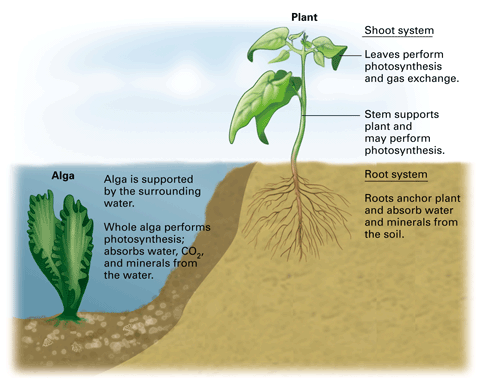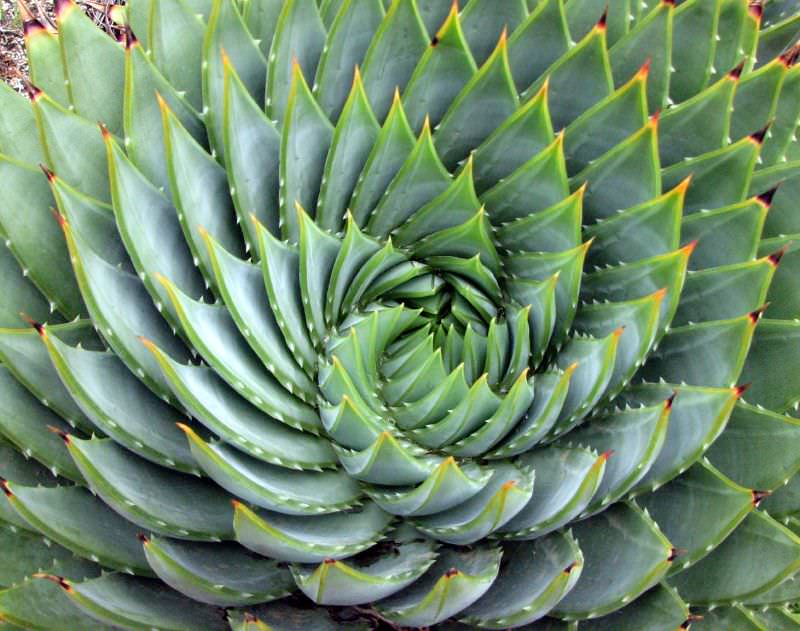Describe One Adaptation Plants Use to Survive on Dry Land
For example cactuses store water in their trunks and stems while aloe plants store water in their leaves. This consists of xylem and phloem tissues that transport nutrients and water.

Plant Adaptations For Living On Land Prehistoric Earth
You will see that all of them have very thin leaves.

. Surface to prevent drying out. Since their leaves float they can easily take in light. There are many varieties of cacti.
Plumbing system to distribute nutrients and water. Biology Plants Survival on Land. One adaptation plants use ti survive on dry land.
Adapting for life on land required several key modifications. Changed fertilization strategy. Mutualism an interaction between two species that is good for both species ex.
Plants were pioneersthe first organisms to colonize dry land. What are the three adaptations for land reproduction on land. 1 Answer Shyam Sundar Mar 1 2015 There are so many adaptations that a terrestrial plant has in order to survive on landWhile some plants remain dependent on a moist and humid environment many have adapted to a more arid climate by developing tolerance or resistance to drought conditions.
This root adaptation allows the plant to escape drought. Typical GymnospermCones Typical Gymnosperm Cones Pine tree Gymnospermsare seed plants with a protected cone or other body for their seed embryos such as conifers evergreen trees seed ferns and cycads. The most successful adaptation solution was the development of new structures that gave plants the advantage when colonizing new and dry environments.
A prominent adaptation is the vascular system. Wetland Plant Adaptations. Plant adaptations - xerophytic Plants with adaptations which allow them to live in hot and dry conditions are called xerophytic.
Thick polymer-coating to prevent dryingdamage -- Light nature to. Plants adapt to dry conditions in a variety of ways but many respond to dry conditions by storing large quantities of water which can be used in times of need. Plant roots provide a habitat for certain fungi and bacteria and in return they help the plant get nutrients form he soil.
Four major adaptations are found in all terrestrial plants. Plant adaptations in the desert The desert is a dry area with scarcity of waters thus the plants there have small leaves and many spines which help them to conserve water. The morphological physiological and behavioral adaptations that desert plants have formed over time enable them to survive the harsh conditions common in arid.
The following adaptations allow plants to. Drought-escaping plants annuals which germinate and grow only when there is sufficient moisture available to complete their life cycle. Three adaptations that allow plants to survive on land would be chloroplasts roots and cell walls.
Support to give structure to plant body 4. The roots of plants that grow in arid conditions are often fleshy and thick as the roots store moisture and nutrition allowing the plant to survive dry conditions. They are often under water for significant periods of time meaning that they are frequently deprived of oxygen.
Plants that live in these areas need to minimise the rate at which they transpire in order to preserve as much water as possible. Nov 27 2016 Water conservation. Drought-evading plants non-succulent perennials which restrict their growth activity to periods when moisture is available.
The light does not have to go through muddy water in order to reach the leaves. See answer 1 Best Answer Copy Well they are adapted to dry land when they are sproutlings. What are the three adaptations of plants needed to survive on land.
Water lilies can thrive in muddy water because of this adaptation. Wetland plants live a tough life. Most desert plant species are called xerophytes because they have in some way changed their physical structure to tolerate extremely hot and dry conditions 10.
Wetland plants also need to remain stable in the soil if they deal with fast moving water that ebbs and flows. Some aquatic plants such as water lilies float on the surface of the water. Pores for gas exchange 3.
There are leafless plants that store water in their green stems. Up to 24 cash back Plant Adaptations. What adaptation allowed plants to live on land.
Describe adaptations of plants that live in dry conditions such as the desert. Desert plants like the mesquite have deep taproots that reach down to the water table to reach water. Only their seeds persist during times of drought.
Fossil records indicate that higher plants evolved from algae Land plants evolved from an algal ancestor. These are plants adapted for the desert. The leaves have thick waxy skins which help to retain water for a long time.
1 Answer Cronus G. So they learn to produce natural sugars using carbon dioxide and the natural nutrients from sunlight. There are a number of adaptations that allow plants to survive on land.
The alternation of generations a sporangium in which the spores are formed a gametangium that produces haploid cells and apical meristem tissue in roots and shoots. Plants developed adaptations to survive on land 1. Roots allows the plant to be stable and collect water while cell walls give.
Additionally plants that live in dry areas often evolve thick outer cuticles that can help retard. One way they do this is by reducing their surface areavolume ratio in many cases they are reduced to just spines like on a cacti.

Plant Adaptations Plant Adaptations Plant Activities Adaptations


Belum ada Komentar untuk "Describe One Adaptation Plants Use to Survive on Dry Land"
Posting Komentar